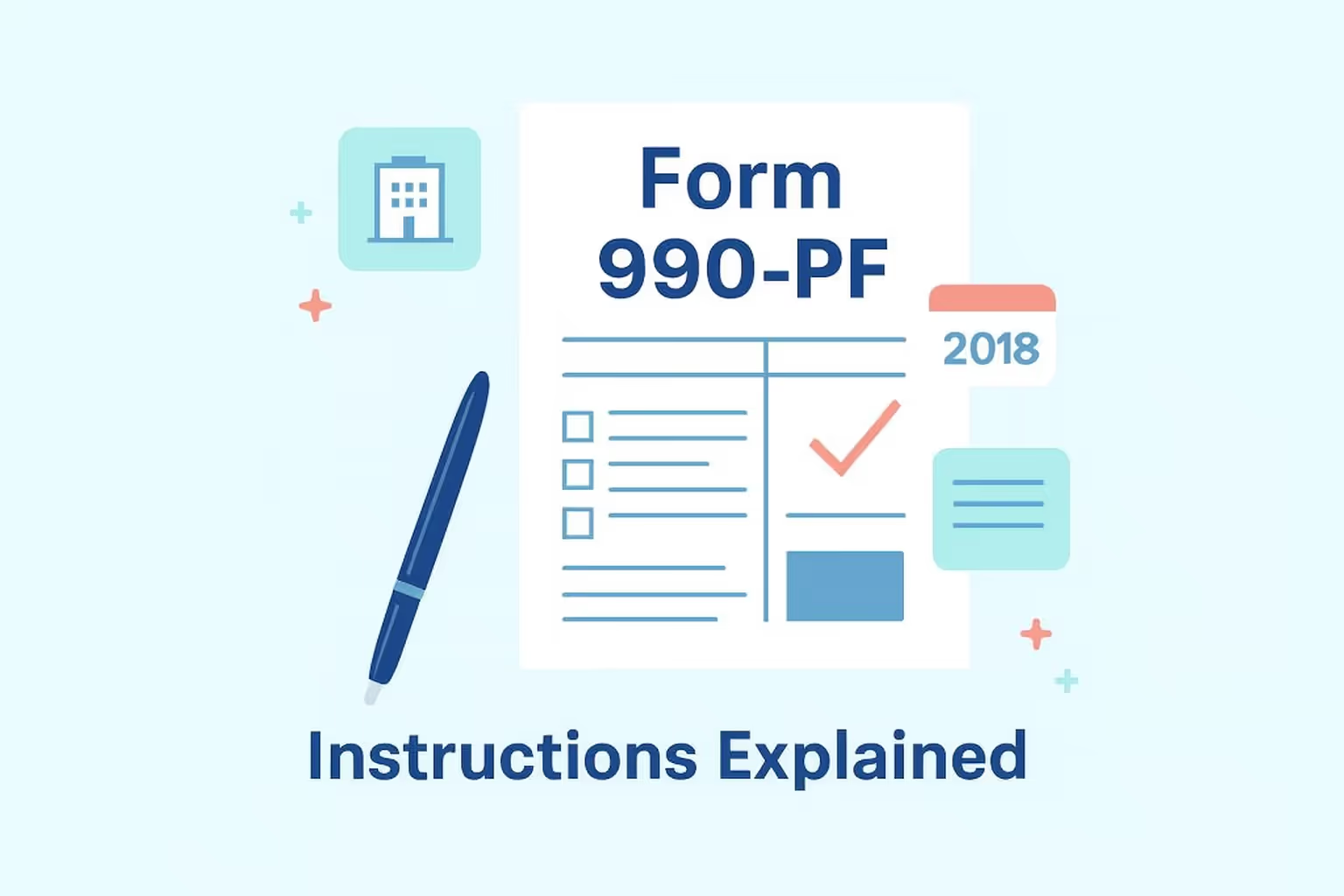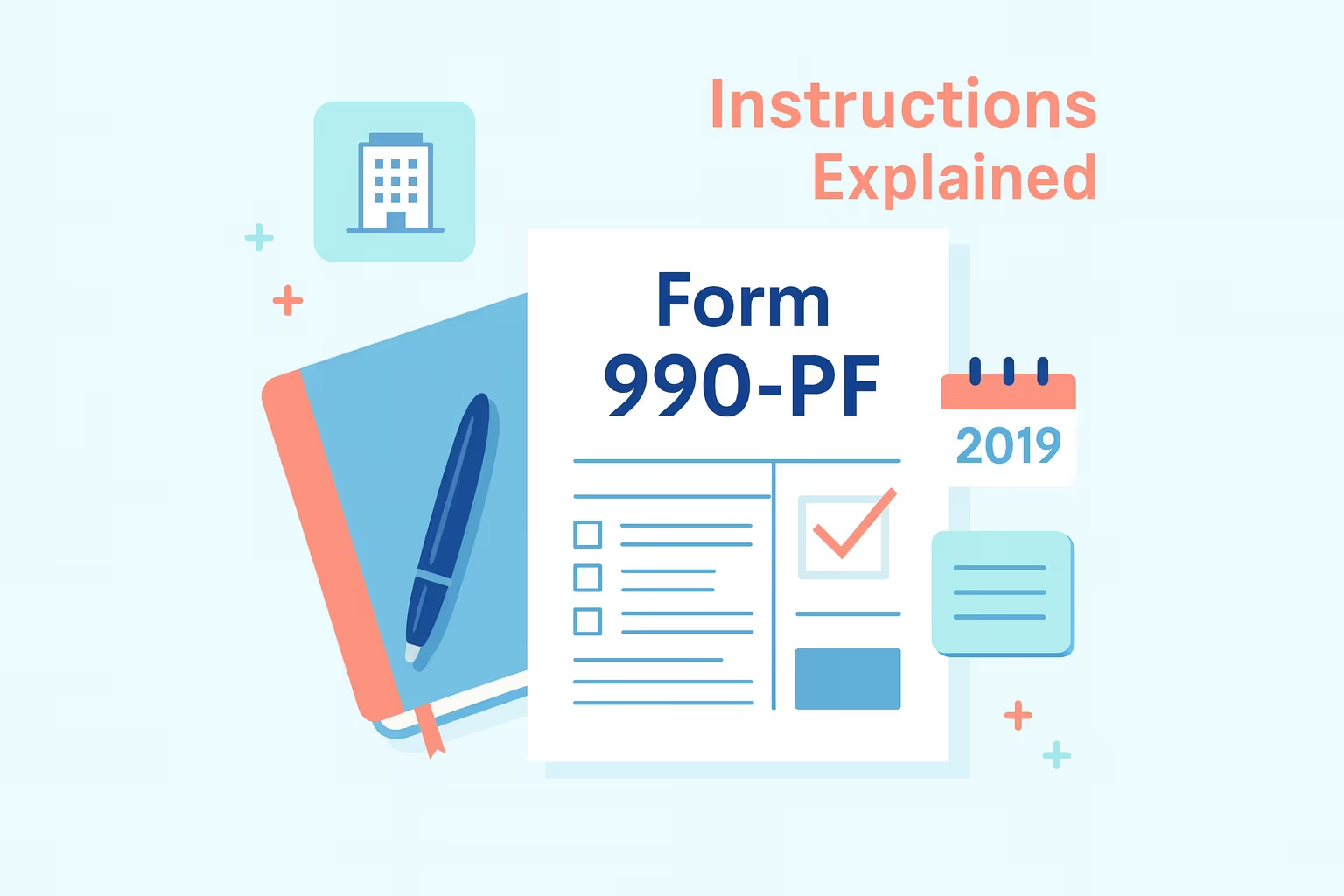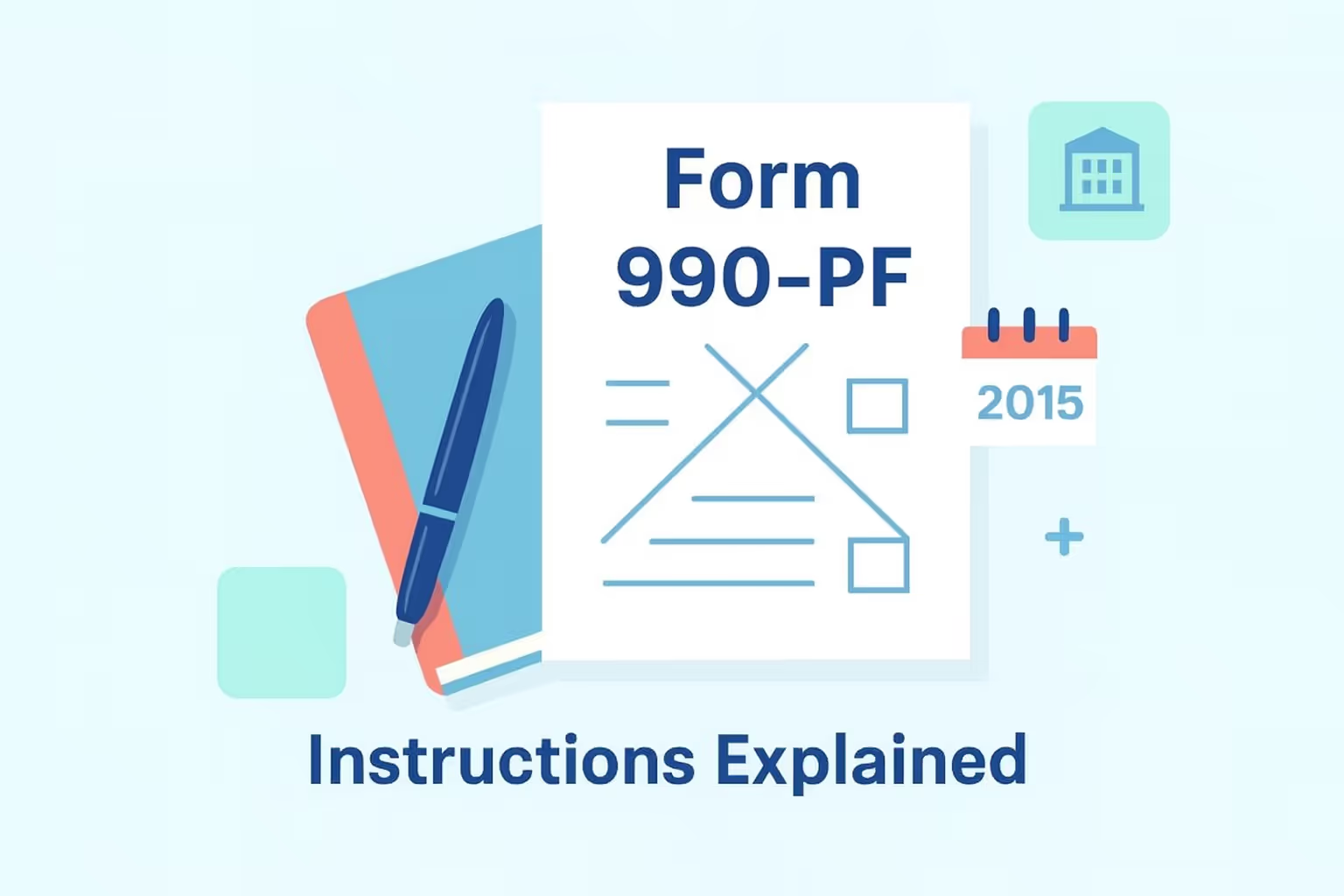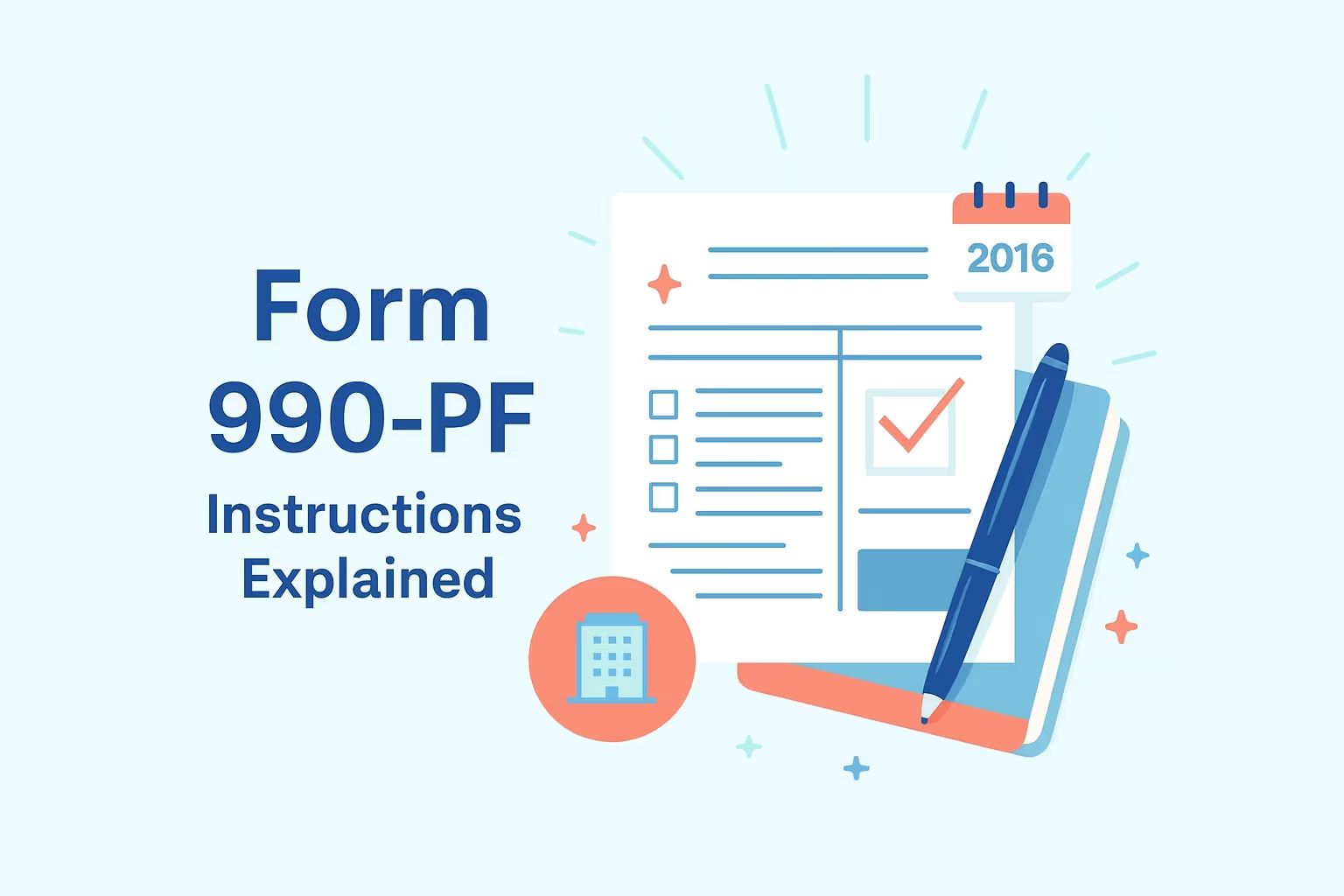
What IRS Form 990-PF (2023) Is For
Form 990-PF is required for every private foundation and any nonexempt charitable trust treated as a private foundation. The form reports net investment income, investment income, capital gains, and capital gain net income while determining excise tax-based obligations. It also documents charitable distributions, direct charitable activities, operating and administrative expenses, and fund balances to show compliance with federal income tax rules for tax-exempt organizations.
When You’d Use Form 990-PF for 2023 (Late or Amended Filing)
Foundations file a 2023 return when the tax year beginning in 2023 has ended, and filing requirements apply based on gross income or total net assets. Late filing occurs when the original due date passes without submission, and amended filing is used to correct net income, excise tax, or charitable distributions. This includes reporting adjustments to unrelated business income, temporary cash investments, program-related investments, or operating foundation status.
Key Rules or Details for 2023
- Excise tax rate: The IRS applied a 1.39 percent excise tax to net investment income, and foundations were required to accurately calculate all capital gains, interest, and dividends.
- Minimum investment return: Foundations had to calculate the minimum investment return by applying the mandated rate to the average fair market value of assets not used for charitable purposes.
- Mandatory electronic filing: The IRS required all 2023 private foundations to use electronic filing systems because paper returns were no longer accepted for any category of filer.
- Distribution requirements: Foundations were required to report undistributed income and confirm whether qualifying charitable distributions met payout rules to avoid excise tax-based assessments.
- Record accuracy: Foundations needed complete documentation for income taxes, tax paid amounts, and income modifications to ensure compliance and avoid penalties.
Browse more tax form instructions and filing guides in our Forms Hub.
Step-by-Step (High Level)
Step 1: Gather financial and activity records
Collect detailed information for net assets, gross income, net income, operating and administrative expenses, and charitable distributions. Include figures for temporary cash investments, program-related investments, and any income-producing activities to ensure accurate federal income tax reporting.
Step 2: Verify foundation type and form version
Confirm whether the organization is a private foundation, private operating foundation, exempt operating foundation, or taxable private foundation. Use only the 2023 Form 990-PF, because filing with incorrect-year forms creates processing issues and may increase tax liability concerns.
Step 3: Complete all schedules and required disclosures
Enter data for capital gain net income, net rental income, fund balances, and income modifications. Include disclosures about prohibited tax shelter transactions and certain personal benefit contracts to comply with tax-exempt interest reporting and compliance rules.
Step 4: File electronically using an approved provider
Submit the return electronically through an IRS-approved system, including the employer identification number and details of your accounting method. Electronic filing reduces errors, helps track estimated tax payments, and allows faster acknowledgment when the tax remains unpaid or corrections are required.
Step 5: Retain records and verify IRS processing
Save digital and physical copies of the full return, including schedules showing net assets, donor restrictions, noncharitable exempt organizations interactions, and direct charitable activities. Keep documentation for potential IRS review and to confirm future estimated tax or income tax responsibilities.
Learn more about federal tax filing through our IRS Form Help Center.
Common Mistakes and How to Avoid Them
- Using an incorrect accounting method: Some foundations enter figures using inconsistent accounting methods, such as cash accrual approaches. Therefore, they should confirm their method selection and apply it consistently throughout the tax year.
- Reporting Incomplete Charitable Distributions: Filers sometimes omit direct charitable activities or report charitable distributions incorrectly, so they should carefully reconcile payments to prevent undistributed income issues.
- Omitting income categories: Errors occur when investment income, net rental income, or unrelated business income is missing, so reviewing financial statements ensures accurate net investment income reporting.
- Misreporting net assets: Some foundations report net assets without accurately reflecting fund balances or donor restrictions, so careful year-end reconciliation is necessary to prevent tax-based discrepancies.
- Incorrect excise tax calculations: Mistakes can arise when applying excise tax-based rules, so verifying all capital gains and adjusted net income figures ensures an accurate determination of liability.
Learn more about how to avoid business tax problems in our guide on How to File and Avoid Penalties.
What Happens After You File
Electronic submissions usually receive acknowledgment shortly after transmission, and IRS review may take several months, depending on the tax year details. If income tax or excise tax remains unpaid, interest continues to accrue until the tax paid amount satisfies the balance. The IRS may issue notices requesting clarification about net assets, administrative expenses, or foreign foundation activity, and you may respond or appeal based on available rights.
FAQs
How does IRS Form 990-PF 2023 affect the reporting of net assets or fund balances?
Form 990-PF for 2023 requires detailed reporting of net assets or fund balances, including fair market value calculations and adjustments for donor restrictions. Foundations must ensure values reflect accurate year-end figures to avoid compliance concerns.
How do private foundations calculate minimum investment return for 2023?
Private foundations calculate minimum investment return by applying the IRS rate to the fair market value of assets not used for charitable purposes. Correct valuation avoids undistributed income issues and prevents additional excise tax obligations.
Why must net assets be reconciled when filing the 2023 return?
Net assets must be reconciled to show accurate fund balances, operating and administrative expenses, and changes in temporary cash investments. This ensures consistency with income-producing activities and program-related investments.
How are temporary cash investments reported on IRS Form 990-PF 2023?
Temporary cash investments must be listed at fair market value and included in total net assets. Proper reporting supports accurate minimum investment return calculations and helps determine adjusted net income.
Why must undistributed income be tracked for private foundations?
Undistributed income affects excise tax-based assessments when foundations fail to meet payout requirements. Tracking ensures that charitable purposes are met and reduces long-term tax liability risks.
How does fair market value affect federal reporting for a private foundation?
Fair market value affects minimum investment return, net assets, and program-related investments. Correct valuation ensures compliance with income taxes, excise tax, and federal income tax tracking.
How do administrative expenses affect a foundation’s tax-based reporting?
Administrative expenses impact adjusted net income, net income calculations, and income tax calculations. Foundations must accurately record operating and administrative expenses to comply with IRS regulations and preserve their charitable purposes.
For more resources on filing or understanding prior-year IRS forms, visit our guide on Nonprofit & Exempt Organization Forms.




























